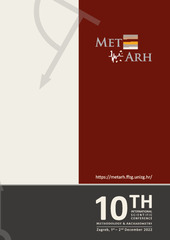Приказ основних података о документу
Tracing prehistoric mines and quarries: preliminary results of the field survey of Rudnik area (central Serbia), campaign 2021.
| dc.creator | Vitezović, Selena | |
| dc.creator | Dimić, Vidan | |
| dc.creator | Mihailović, Danica | |
| dc.creator | Antonović, Dragana | |
| dc.date.accessioned | 2023-11-23T10:20:48Z | |
| dc.date.available | 2023-11-23T10:20:48Z | |
| dc.date.issued | 2022 | |
| dc.identifier.isbn | 978-953-379-040-4 | |
| dc.identifier.uri | http://rai.ai.ac.rs/handle/123456789/809 | |
| dc.description.abstract | Prehistoric communities exploited diverse sources of raw materials, from relatively small ones up to large mines and quarries. However, tracing down in the archaeological record the exact source of raw material exploitation is in certain occasions rather difficult – these sources may have been completely destroyed and exhausted with later activities, they may have been comprising small, difficult to detect area, preserved archaeological traces may be too scarce to be detected, etc. Certain areas where the present-day geological data show that sources of raw materials are relatively abundant and particularly interesting for archaeological research. One of these areas is Rudnik mountain, the second major volcanic area in central Serbia, known for its richness and variety of raw materials used in the past. Abundant historical and archaeological record of Rudnik showed intensive exploitation of diverse ores in medieval and pre-modern times., as well as prehistoric exploitation of malachite, dated to the Bronze Age period. The site of Prljuša – Mali Šturac was discovered in the 1980s; research with the limited scope was then conducted and systematic research was initiated in 2011 and is still in progress. However, the settlements of the populations that exploited this mine are unknown. Furthermore, the area of Rudnik mountain and adjacent areas are also known for sources of diverse lithic raw materials. This is why the Archaeological Institute in Belgrade initiated systematic field reconnaissance with the main scope to search for sources of raw materials exploited in prehistory and associated settlements. In this poster will be presented the preliminary results of the 2021 field survey campaign. During the 2021 campaign, the areas of the municipalities of Kragujevac and Knić were extensively surveyed. Three modern quarries and their adjacent areas were researched, Ramaća, Rogojevac and Vučkovica, and limited traces of prehistoric activities were discovered in the relative vicinity. | sr |
| dc.language.iso | en | sr |
| dc.publisher | Zagreb : Faculty of Humanities and Social Sciences of the University of Zagreb | sr |
| dc.relation | Sistematsko rekongosciranje praistorije Rudnika i okoline:opština Knić i terotirija grada Kragujevca (Ministarstvo kulture i informisanja Republike Srbije) | sr |
| dc.rights | openAccess | sr |
| dc.source | 10th International Scientific Conference Methodology & Archaeometry, Zagreb, 1st- 2nd December 2022 | sr |
| dc.subject | Field reconnaissance | sr |
| dc.subject | Raw material deposites | sr |
| dc.subject | Ramaća | sr |
| dc.subject | Rogojevac | sr |
| dc.subject | Vučkovica | sr |
| dc.title | Tracing prehistoric mines and quarries: preliminary results of the field survey of Rudnik area (central Serbia), campaign 2021. | sr |
| dc.type | conferenceObject | sr |
| dc.rights.license | ARR | sr |
| dc.citation.epage | 57 | |
| dc.citation.spage | 57 | |
| dc.description.other | In: Ina Miloglav (ed.), Book of abstracts of 10th Scientific conference Methodology & Archaeometry, 1st - 3rd of December 2022, Zagreb, Croatia, (pp. 57). Zagreb: Faculty of Humanities and Social Sciences of the University of Zagreb. | sr |
| dc.identifier.fulltext | http://rai.ai.ac.rs/bitstream/id/1845/bitstream_1845.pdf | |
| dc.identifier.rcub | https://hdl.handle.net/21.15107/rcub_rai_809 | |
| dc.type.version | publishedVersion | sr |


